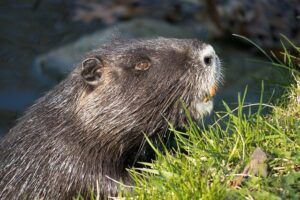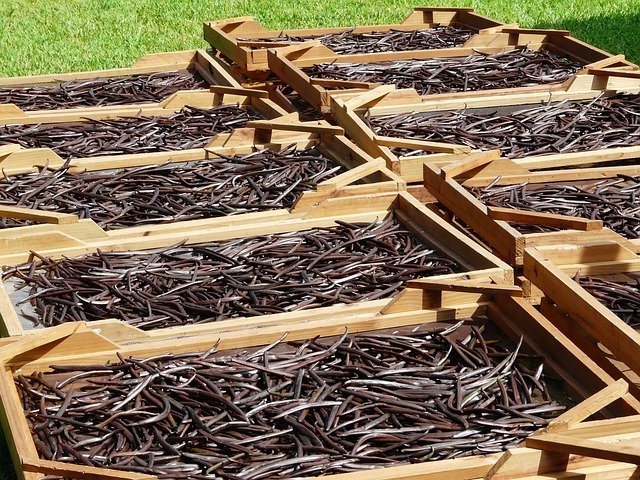Just where do vanilla and vanilla flavouring come from?!
If you’ve been on TikTok recently, you’ve probably seen the videos of people’s hilarious reactions to discovering where vanilla comes from – beaver butt!
Many of the videos have gone viral, like this one;
Such videos have probably done more to inform people about castoreum than all the vegan pages combined, or the several articles that have appeared over the years in various publications over the years.
As a quick reminder, or the low down if you didn’t know already, castoreum is a substance secreted from a beaver’s castor sac, located near the anus. (This is not the same as the testes, in case you were wondering.) Castoreum is slimy brown goo that beavers use to mark their territory. It just happens to smell and apparently taste ‘nice’….
Because it’s an animal product, under FDA regulations in the USA, it can be listed as ‘natural flavouring’ or ‘natural vanilla flavouring’, leaving the consumer completely unaware as to the origins.
In order to extract castoreum, the beavers must be ‘milked’, and the ‘lovely’ people who do this strange sac-squeezing milking job affirm that it doesn’t harm the beavers to be milked… Hmm, sound familiar? Well that won’t wash with us.
But what’s the truth behind the hype? Does vanilla flavouring really come from a beaver’s behind? If so, then it’s certainly not vegan. So is it time to kiss goodbye to ice-cream once again? Ah, vanilla! That beautiful, sweet, enticing scent, a staple of butterfly cakes, ice-cream, many a biscuit and plenty of our favourite foods that we’ve a deep bond with since childhood. Vanilla tones are often used to enhance strawberry and raspberry flavoured goods too. Vanilla, that delicious accompaniment to coffee. Vanilla, a scent whose sweet and sultry tones have long been used to attract a mate, and then of course, spark desire! Ah, vanilla, the aphrodisiac…
But wait, whut?! All that came from beavers’ extra ‘balls’?!
And now I have to kiss it goodbye?!

Well, in a word, No.
Of course not! I mean, vegan vanilla ice-cream anyone?
Hang on, we’ll explain….
Whilst it is indeed true that castoreum is still used, and therefore may be lurking in your cupcakes, your ice-cream and your perfume, it is expensive, and this makes it cost-prohibitive. For this reason, the practice is not as widespread anymore as it once was. The food industry confirms that less than 300 pounds of castoreum are produced per year worldwide.
Enter the humble vanilla bean! You hadn’t forgotten about this, right?
This is natural vanilla from the orchids of the plant ‘Vanilla planifolia’ – (‘Flat-leaved vanilla’), a part of the Orchid family.

They are mostly grown close to the Equator, in countries such as Madagascar, Mexico, Tahiti and Indonesia.
However, an even greater majority of commercially used vanilla flavouring (around 94 – 96% of it) these days, is actually produced synthetically.
Vanillin
Vanillin is the substance most likely to be found in your food and beverages. It’s actually an alternative to real vanilla extract and is the one that whilst also natural, is most often produced synthetically. The natural version is derived from the vanilla bean and the synthetic version is mass-produced using chemicals. Natural vanillin can be up to 300 times as expensive as the synthetic version, due to its limited and labour-intensive harvesting procedures. So which one do you think the majority of companies are likely to use?
Vanilla extract
Vanilla extract is what you’re most likely to find in the supermarket when you want to buy vanilla flavouring for your baking or to throw into your coffee. The extract is made by soaking vanilla pods in ethanol. It contains vanillin as the primary ingredient but is actually comprised of around 200 different compounds which together give it a distinct smell and taste.
Vanilla essence
Vanilla essence is usually produced using a concoction of chemically produced flavours, water, ethanol, emulsifiers and propylene glycol. As you might expect, it tends to be somewhat less-‘vanillary’ than vanilla extract, although some people can’t tell the difference.
The best way to be sure is about the source of the vanilla flavouring is to check that a product is labelled ‘vegan’, as in theory a product labelled as vegan should not contain anything derived from animals. If you don’t want to end up accidentally consuming something that you’d rather not in hindsight, then as always, it’s best to do you due diligence and check things out properly.
But phew, at least the chances of castoreum being in your products is actually pretty slim.
2 Comments
Yes Tracey! They’ve had a few people concerned, lol. Glad we could help out.



I saw the TikTok videos and I was worried about everything vanilla! I’m so glad to know it’s not all from beavers!